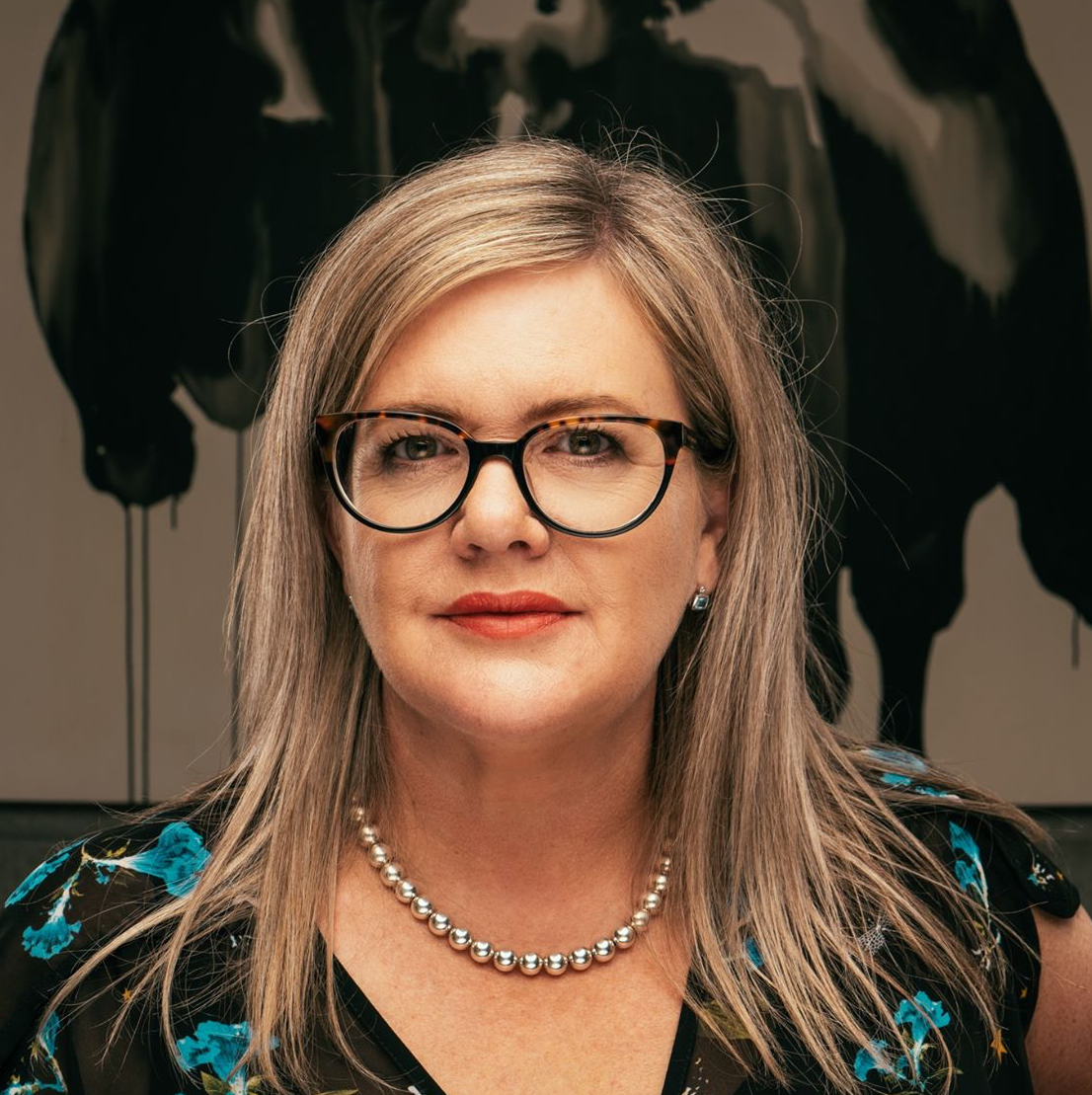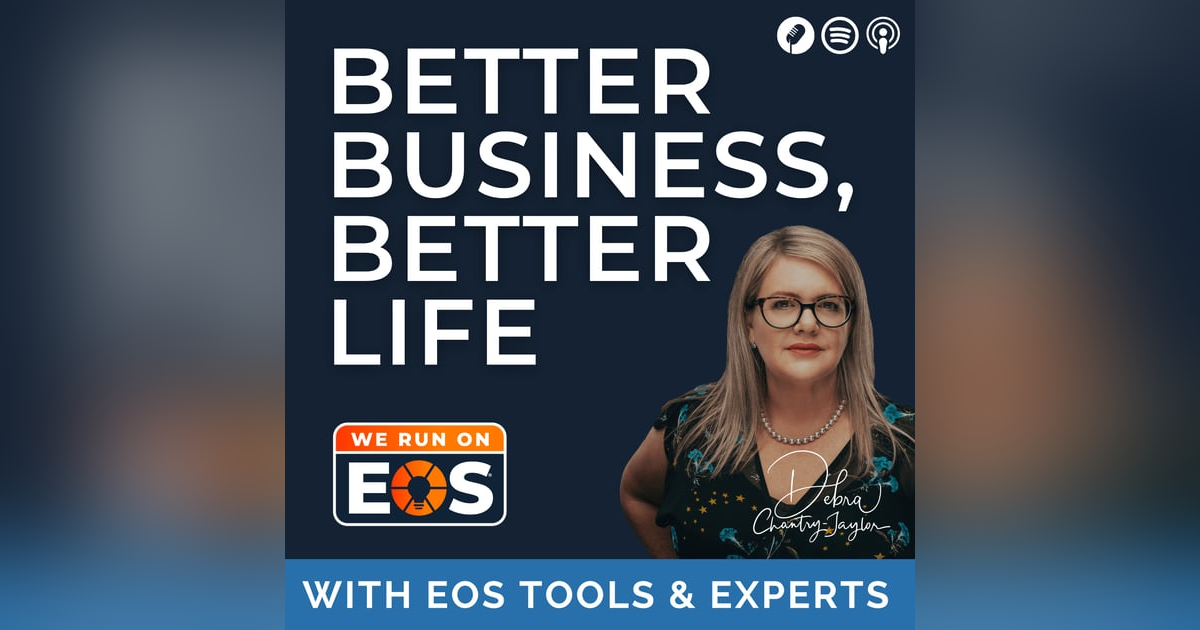Less But Obsess: Why EOS Rocks Beat OKRs | Debra Chantry-Taylor | Ep 224
Welcome to Better Business, Better Life. In this episode, host Debra Chantry-Taylor breaks down why EOS Rocks are a better fit than OKRs for entrepreneurial and fast-growing businesses. If you're feeling stretched too thin by endless objectives, this episode will show you how to simplify, refocus, and gain real traction.
Welcome to Better Business, Better Life. In this episode, host Debra Chantry-Taylor breaks down why EOS Rocks are a better fit than OKRs for entrepreneurial and fast-growing businesses.
She discusses how OKRs often lead to confusion, scattered focus, and poor follow-through while EOS Rocks bring clarity, accountability, and weekly progress. With practical tips on setting quarterly priorities, assigning clear ownership, and using tools like the Accountability Chart, Scorecard, and Level 10 Meetings, Debra shows how to build a simple, effective execution system that actually works.
If you're feeling stretched too thin by endless objectives, this episode will show you how to simplify, refocus, and gain real traction.
CONNECT WITH DEBRA:
___________________________________________
►Debra Chantry-Taylor is a Certified EOS Implementer | Entrepreneurial Leadership & Business Coach | Business Owner
►Connect with Debra: debra@businessaction.co.nz
►See how she can help you: https://businessaction.co.nz/
____________________________________________
Chapters:
00:26 - Introduction to EOS Rocks vs. OKRs
01:07 - Defining OKRs and EOS Rocks
01:58 - Challenges with OKRs in Entrepreneurial Businesses
03:19 - The Power of EOS Rocks and Accountability
05:35 - Real-Life Examples of EOS Rocks in Action
07:08 - Conclusion and Call to Action

She is based in New Zealand but works with companies around the world.
Her passion is helping Entrepreneurs live their ideal lives & she works with entrepreneurial business owners & their leadership teams to implement EOS (The Entrepreneurial Operating System), helping them strengthen their businesses so that they can live the EOS Life:
- Doing what you love
- With people you love
- Making a huge difference in the world
- Bing compensated appropriately
- With time for other passions
She works with businesses that have 20-250 staff that are privately owned, are looking for growth & may feel that they have hit the ceiling.
Her speciality is uncovering issues & dealing with the elephants in the room in family businesses & professional services (Lawyers, Advertising Agencies, Wealth Managers, Architects, Accountants, Consultants, engineers, Logistics, IT, MSPs etc) - any business that has multiple shareholders & interests & therefore a potentially higher level of complexity.
Let’s work together to solve root problems, lead more effectively & gain Traction® in your business through a simple, proven operating system.
Find out more here - https://www.eosworldwide.com/debra-chantry-taylor
Debra Chantry-Taylor 00:00
And if you're an entrepreneurial or fast growing privately owned business, I'd argue that EOS rocks are the more powerful tool. Too many goals often dilute the focus. It's actually really hard to keep track of all the cascading OKRs and who's responsible and what's going on. And a lot of the time people will spend more time tracking than they're actually doing.
Debra Chantry-Taylor 00:26
Hi and welcome to the Better Business better life Podcast. I'm Debra Chantry-Taylor, EOS implementer, Family Business Advisor, and someone who's been in the trenches with hundreds of business owners over the last 25 years.
Today I'm going to be talking about a topic that stirs up a lot of debate. OKRs versus rocks, they're both goal setting frameworks, but they work very differently. And if you're an entrepreneurial or fast growing privately owned business, I'd argue that EOS rocks are the more powerful tool, especially when you combine them with a strong accountability chart and a weekly scorecard. So let's unpack what these tools really are, how they differ and why less really is more when it comes to execution.
Debra Chantry-Taylor 01:04
So first of all, let's get started with what are OKRs and what are rocks. Let's start by breaking down what each term actually means. So OKRs are objectives and key results. They've come out of Silicon Valley, and they were made famous by companies like Google. They typically involved setting big, ambitious goals at a company, team and individual level, with three to five measurable key results per objective, they often cascade throughout the business. Debra, already having their own set rocks in EOS language are three to seven key priorities set quarterly at a leadership team level. Each rock is clear, specific and owned by one person. They may be shared in execution, but one person and one person only is accountable for completion, and rocks don't cascade in the same way. We only add departmental or individual rocks if they're absolutely necessary. So in short, OKRs lots of goals at all levels. Rocks, fewer priorities, few fewer focus priorities with clear ownership.
Debra Chantry-Taylor 02:00
So what's the problem with OKRs in entrepreneurial companies? I guess the thing is that OKRs, they sound great on paper, but in entrepreneurial businesses, especially those of fewer than 250 staff, they often fall short. That said, I have also worked with companies that have up to 600 staff, and they still find rocks a whole lot better mythology.
And so here's why, too many goals often dilute the focus. It's actually really hard to keep track of all the cascading OKRs and who's responsible and what's going on. And a lot of the time, people will spend more time tracking than they're actually doing. The biggest challenge, I think, is about accountability.
Debra Chantry-Taylor 02:35
So accountability becomes fuzzy. Who actually owns what? I've seen businesses spend hours writing beautiful OKRs, only to have them fall by the wayside three weeks in, there's no rhythm, no accountability, no attraction. One business I actually worked with had OKRs for every team member, but no clear structure around who owned what. Functionally, when we looked closer, people were setting goals for things that didn't really actually matter. So they had activity, but they didn't have the outcomes. So why do I think rocks work better? I think they work because they force focus. We're looking at only three to seven rocks per quarter for the whole team, and each one of these rocks has an odour.
They're very much smart, specific, measurable, achievable, realistic and time bound, and they're reviewed every single week in the level 10 meeting. And rocks aren't about business as usual. They're about moving the business forward. I always talk about moving the needle. So business as usual is measured using a scorecard, and the scorecard tells you, week in week out, how we're going with business as usual. Are we doing okay? Are we not doing okay? The rocks are the laser sharp focused on what are the most important things we must get on the next 90 days that will actually move the needle in the business.
Debra Chantry-Taylor 03:45
And then, of course, the whole thing of less, but obsess. You hear me say this all the time, less is more. You go all in with rocks, you remove all distractions, you hold each other accountable, and you do that on a weekly basis. And the reason why this works is it's really manageable. Leadership Teams. They're not overwhelmed. You can create real clarity. And as always, clarity comes with confidence. So when you combine this with the accountability chart and the scorecard, you've suddenly got the real power of structure, because rocks don't stand alone. They work best when integrated with the accountability chart and the scorecard. So let's start with that all important accountability chart in EOS.
Debra Chantry-Taylor 04:24
The Accountability chart defines who owns what in the business by function, not by title. It gives those five to six key bullet points, their roles and responsibilities that they're actually held accountable for by their function. It makes sure that we've got the right people in the right seats they have to GW see that role. And so once you've got that clarity around the structure within your organisation, when you assign a rock, you assign it to a function first and then to the person who owns that seat, what this means is there's no more confusion. Everyone knows exactly who owns the result, and it keeps people from stepping on each other's toes, duplicating effort or avoiding ownership, or did. Together, and then we layer in the scorecard, and the scorecard is those five to 15 leading indicators that are we are tracking weekly with the idea of making sure we're on track. Now you may have a couple of lagging indicators in there, but mostly it's the leading indicators that actually give us a sense of what's really going on when we think about those leading indicators as a measurable. Every single measurable has an owner based on the accountability chart.
Debra Chantry-Taylor 05:24
Now, if any of those measurables go off track, it triggers an IDS the issue solving, track, identify, discuss and solve in the level 10 meeting. So what the scorecard really tells us is, are we healthy? Are we winning? Are we trending in the right direction? And when you unlock, bring your rocks. When your rocks are linked to your scorecard and your structure supports both, you've got an unbeatable execution engine. So here's a few real life examples.
Debra Chantry-Taylor 05:51
Let me share two stories professional services firm. They used OKRs, but nobody updated them. So people had six or seven each, but none linked back to a clear business priority. When we shifted to rocks, we simplified the structure and ran level 10s, they started hitting goals within two quarters. The other story I'd love to share is about a family run construction business. So their rocks became more like to do lists, but once we connected them to the functions of their accountability chart and started tracking the measurables on a scorecard, then they had their business as usual, and they finally got clear. That clarity around the accountability chart, the scorecard and the rocks is really what got contraction.
Debra Chantry-Taylor 06:29
So as always, I'd love you to leave here with practical tips and tools. So you're probably asking, Where on earth do I start? So here's how I think you can shift from overwhelm to clarity. Number one, define your top three to seven priorities for the quarter as a leadership team. Number two, assign each rock to a function and then to a person. Number three, build or review your accountability chart to make sure you have got those right people in the right seats. Create number four, create that scorecard with your weekly leading and lagging indicator so you can keep track of business as usual. And then number five meet weekly in a level 10 meeting to review all of your scorecard measurables, all of your rocks, and actually look for issues, solving those issues at the root cause to keep yourself moving forward.
Debra Chantry-Taylor 07:14
And then my desperate plea to you is, don't aim for perfect. Aim for progress. Build the habit. And as I always say, less is more, but less but obsess. So I'm not knocking OKRs. I think OKRs are great in theory, and I've actually seen them work really well in some of my organisations, but in the real world of entrepreneurial businesses, rocks just work, because they give you that clarity, that simplicity and the accountability without all the noise. So if you're ready to simplify your execution, align your team and actually achieve the goals that matter. Let's have a chat. You can reach me at hello@businessaction.co.nz, or visit our website on www.businessaction.co.nz, you don't need more goals, you just need the right ones. You need a system to make them stick.
Thanks for listening. I'll see you next time.


















